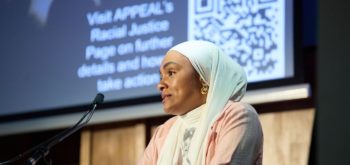A report from HM Inspectorate of Prisons found that the rules for managing child and women prisoners assessed as presenting a high level of risk to the public were prevented from accessing interventions to reduce their level of risk and encourage rehabilitation.
The thematic review, published on 23 May 2023 examined the treatment of women and child prisoners who are assigned ‘restricted status.’ At the time of the report, 18 women out of the 3 219 held in the women’s estate, and nine out of 434 children were assigned a restricted status. Whilst high risk adult male prisoners are detained in specific prisons with additional security, there is no equivalent for women and child prisoners as they make up less than 5% of the prison population. Instead, women and children who present a greater risk of harm to the public are categorised as ‘restricted status’ prisoners and are subject to additional security measures and restrictions in order to ‘minimise the possibility of escape and protect the public from harm.’
However, the report found significant issues with the assessment of women and child prisoners in order to determine their level of risk as well as with the additional security measures arising from being assigned ‘restricted status.’
In relation to the assessment of prisoners and the determination of their ‘restricted’ status, the report highlights that the panel responsible for deciding who had restricted status contained no experts on youth or female prisoners and therefore lacked expertise. More generally, the current policy is based on category A male prisoners and ‘does not take into account the different risks posed by women and children.’
Moreover, concerns were raised regarding the measures implemented, deemed to be ‘too rigid and, in many cases, superfluous’. For instance, children were strip-searched every 28 days regardless of the necessity of such measures; out of the 21 cases reviewed by inspectors, they only found it justified in one. The review also emphasised how children and women prisoners with restricted status found themselves in an impossible position, where they could not access rehabilitation, risk-reduction programmes or education because of their restricted status. However, these programmes are essential to reducing the risk they present.
The report concludes that a new approach to managing restricted status is needed. The chief inspector of prisons, Charlie Taylor concluded that: ‘These arrangements apply to a very small number of women and children, but they are indicative of a lack of common sense and proportion that we see too often… The priority must be that the public are protected, but that is not achieved through a one-size-fits-all approach to risk.’







